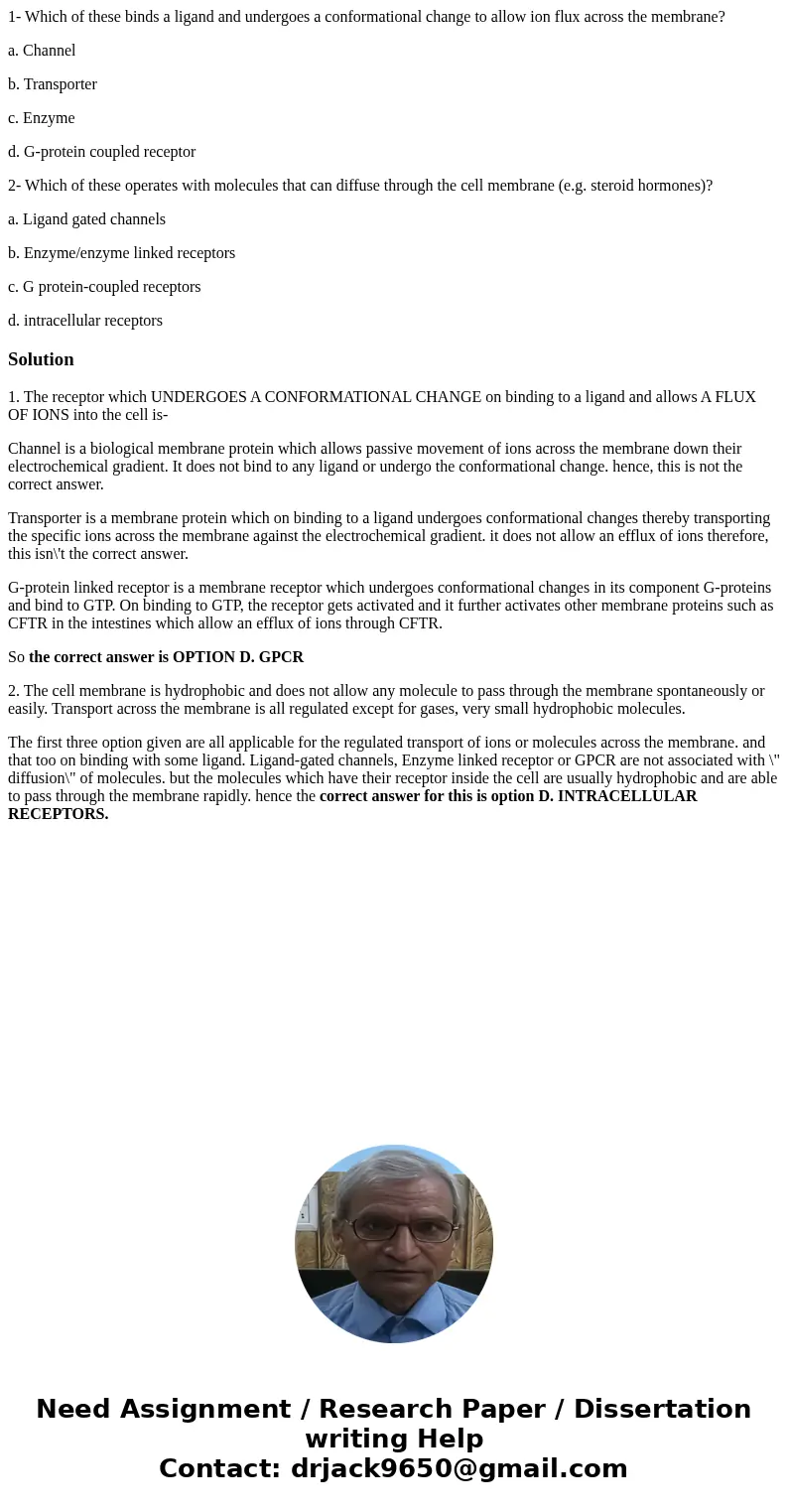1 Which of these binds a ligand and undergoes a conformation
1- Which of these binds a ligand and undergoes a conformational change to allow ion flux across the membrane?
a. Channel
b. Transporter
c. Enzyme
d. G-protein coupled receptor
2- Which of these operates with molecules that can diffuse through the cell membrane (e.g. steroid hormones)?
a. Ligand gated channels
b. Enzyme/enzyme linked receptors
c. G protein-coupled receptors
d. intracellular receptors
Solution
1. The receptor which UNDERGOES A CONFORMATIONAL CHANGE on binding to a ligand and allows A FLUX OF IONS into the cell is-
Channel is a biological membrane protein which allows passive movement of ions across the membrane down their electrochemical gradient. It does not bind to any ligand or undergo the conformational change. hence, this is not the correct answer.
Transporter is a membrane protein which on binding to a ligand undergoes conformational changes thereby transporting the specific ions across the membrane against the electrochemical gradient. it does not allow an efflux of ions therefore, this isn\'t the correct answer.
G-protein linked receptor is a membrane receptor which undergoes conformational changes in its component G-proteins and bind to GTP. On binding to GTP, the receptor gets activated and it further activates other membrane proteins such as CFTR in the intestines which allow an efflux of ions through CFTR.
So the correct answer is OPTION D. GPCR
2. The cell membrane is hydrophobic and does not allow any molecule to pass through the membrane spontaneously or easily. Transport across the membrane is all regulated except for gases, very small hydrophobic molecules.
The first three option given are all applicable for the regulated transport of ions or molecules across the membrane. and that too on binding with some ligand. Ligand-gated channels, Enzyme linked receptor or GPCR are not associated with \" diffusion\" of molecules. but the molecules which have their receptor inside the cell are usually hydrophobic and are able to pass through the membrane rapidly. hence the correct answer for this is option D. INTRACELLULAR RECEPTORS.

 Homework Sourse
Homework Sourse